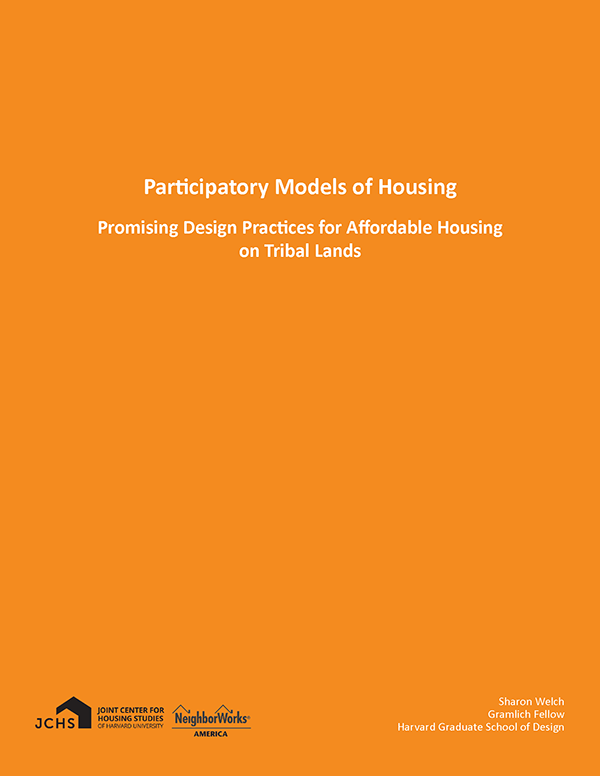Participatory Models of Housing: Promising Design Practices for Affordable Housing on Tribal Lands
In the US, 22 percent of households in tribal areas either have severely inadequate housing or are overcrowded—or both. This reality is abysmal, especially in comparison with the significantly higher quality of housing on nontribal lands. Furthermore, projects funded, designed, and/or run by the US Department of Housing and Urban Development (HUD) are often poorly built and designed in ways that do not respect cultural norms, perpetuating the economic instability implicit in inadequate housing. Simultaneously, there are several promising nascent efforts to develop housing that is affordable, higher quality, and culturally sensitive. This paper, based on research conducted while the author was a Gramlich Fellow at the Center, examines three such efforts with reference to the following questions:
How do Native design practitioners define Native and culturally sensitive design? How can design uplift Native communities? How can design create self-determination for tribes? What current design practices exist that have been successful in addressing housing needs on tribal lands? How do current design practices relate to past methods of housing construction on tribal lands? How does federal policy influence the design decisions practitioners are able to make with tribal housing?

